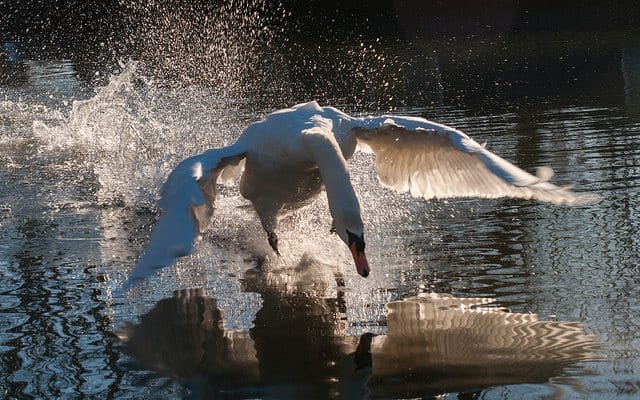Save The Swans! Mute Swan’s ‘Death Sentence’ Reversed


Mute swans have a new look on life now that a bill was passed by Governor Andrew Cuomo ending the Department of Environmental Conservation’s (DEC) prohibition of the species, according to State Assemblymember Steven Cymbrowitz, who wrote the bill.
Cymbrowitz has doggedly tried to place a moratorium on the state’s plan to cull New York’s mute swan population — which the DEC targeted for extermination in 2013. Governor Andrew Cuomo has twice vetoed legislation that would halt the DEC’s effort to eliminate the swans, which the agency says are an invasive species that threaten local ecosystems.
“The people have spoken and I’m pleased that the Governor has listened,” Cymbrowitz said. “Tens of thousands of New Yorkers signed petitions, sent letters and emails to the Governor’s office, and, in my community, called my office to tell me how much they enjoy watching the swans in Sheepshead Bay and Manhattan Beach. People were very vocal about their support of this bill, and I have to believe it made all the difference.”
The bill establishes a two-year moratorium on the DEC’s plan to manage the mute swan population, which were introduced to North America from Europe in the 1800s. It also requires the agency favor non-lethal management techniques and provides stronger evidence that the swans endanger ecosystems.
The population of the mute swans was about 500 birds in the early 1970s and has risen to 2,000 in the early 2000s, according to the DEC.
The DEC has been managing the population of the birds with techniques like egg-addling — removing the egg from the nest, stopping the development of the embryo, and putting the egg back — and removing adult birds from the wild.
Wildlife managers, ecologists, and ornithologists have been concerned over the ecological impacts of the mute swan for decades, according to the DEC. The birds uproot submerged aquatic vegetation, the main food source of the mute swan, that provides food and shelter for native fish.
The submerged aquatic vegetation also sustains animals of conservation concerns like the black duck, the canvass back, and the Atlantic brant.
The mute swan is also known to be aggressive towards other birds and ducks, as well as people in boats. In some cases, according to the DEC, people accidentally drowned due to being attacked by a mute swan. Below is a video of a swan adorably annoying a maintenance worker.
However, in the 1960s, world scientists declared the mute swan the international symbol of world peace.
They also cause great concern for airplanes, according to the DEC. Since 1990, there have been eight swan strikes on airplanes — half of them occurred at John F. Kennedy International Airport.
In March of 2015, the DEC conceded in their Mute Swan Management Plan that “complete elimination of mute swans in New York is not a viable option given the expressed public opinions associated with these birds.”
The fight to protect the mute swan has, indeed, been a tumultuous one with animal lovers battling tooth and nail to stop the killing of the birds.
Below is a video from the mute swan advocacy group, The Regal Swan Foundation:
“Tonight, this magnificent bird, the ‘International Symbol of World Peace,’ once again, flies freely, proudly and safely over the skies of New York,” said the Regal Swan Foundation after the bill was signed by Cuomo.
Any plan that the DEC comes up with in the future to manage the majestic bird will need to be presented in a public setting. So, for now, the mute swans are safe.



